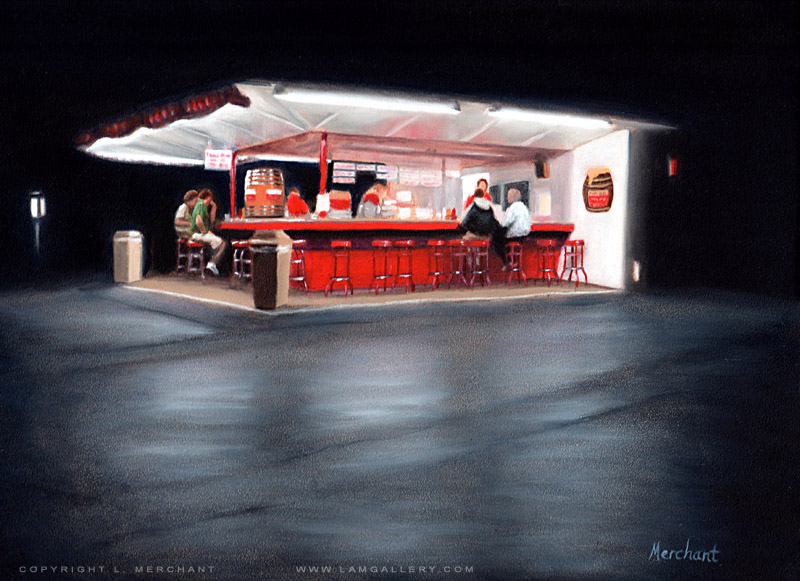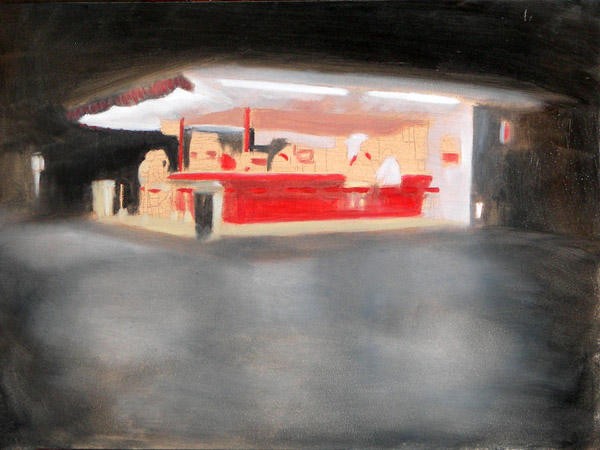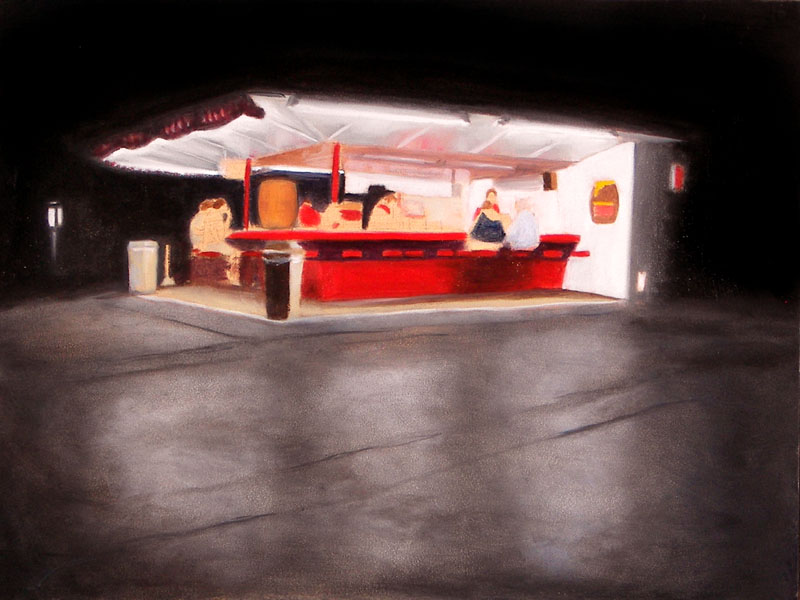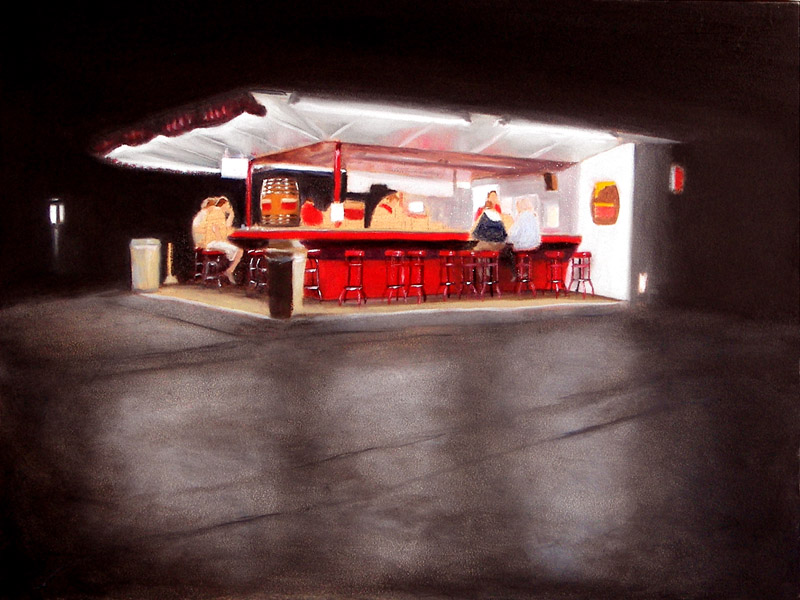
Diner
Oils, 9x12, 2008

|
This painting will be on 9x12 Ampersand Gessobord. I use panels for a few reasons - first of all, the grain is smaller than canvas, so you can paint finer details, and secondly, the panels are thinner, so they store more easily than canvas. They also don't bend like canvas does, so there's less chance of the paint cracking.
Before beginning, I had pre-toned the panel with a wash of burnt umber and let it dry. Toning keeps white patches from showing through, and can make a painting seem to progress more quickly by allowing you to focus on lights and darks.
Here I've blocked in the underpainting, which is just the base color of the areas.
|

|
On this layer, most of the time was spent defining the highlights on the canopy. Even though the local color of the canopy is white, there are many colors that are reflected onto it and must be added to get the shiny reflective effect. These values can get quite dark.
|

|
Here I'm continuing to block in details, adding as many highlights as possible to emphasize the variety of lights bouncing around.
To emphasize the brightness of the diner shining in the night, I'm really pushing the blacks and dark values - mixing blacks with extra blues to keep the night color from appearing flat.
|

Here's the final image. I've finished blocking in the people, but decided not to complete the details for the people and objects in the background. This gives it a sense of depth of space, as it's usually harder to see details on objects further away. The general rule is, paint details where you want the eye to focus, and the eye will fill in the rest.
|
|
|
|
